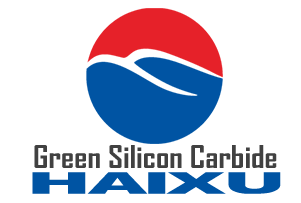The Core Principle: Surface Preparation is Everything
For a non-stick coating (like PTFE/Teflon or ceramic) to adhere properly and have a long service life, the substrate (usually aluminum or stainless steel) must be perfectly prepared. This preparation involves three key steps, and GSiC is crucial for the first one:
Cleaning & Degreasing
Abrasive Blasting (The Key Step using GSiC)
Priming & Coating
Why Green Silicon Carbide is the Ideal Abrasive for This Job
Green Silicon Carbide is a synthetic mineral known for its extreme hardness and sharp, friable grains. Here’s why these properties are perfect for preparing cookware surfaces:
Extreme Hardness (~9.5 on Mohs scale):
Function: It’s harder than almost any metal used for cookware. This allows it to effectively cut into and clean the surface of aluminum or stainless steel, removing oxides, mill scale, and old coating residues.
Benefit: Creates a fresh, “active” surface.
Sharp, Friable Grains:
Function: As GSiC grains are used, they fracture to reveal new, sharp edges. This “self-sharpening” property ensures consistent and aggressive cutting action throughout its lifespan.
Benefit: It creates a perfectly uniform anchor pattern or surface profile (a microscopic roughness). This dramatically increases the surface area for the primer to grip onto, creating a strong mechanical bond.
Chemical Purity:
Function: Unlike some other abrasives, high-quality GSiC contains no free silica or metallic impurities that could contaminate the surface.
Benefit: Prevents contamination that could lead to coating failure, such as bubbling, peeling, or introducing spots of weakness.
Fast Cutting Action & High Efficiency:
Function: Its sharpness and hardness allow it to achieve the desired surface profile quickly in a blasting operation.
Benefit: This makes the manufacturing process more efficient and cost-effective.
The Process in Action: Preparing a Pan
Imagine a factory producing new non-stick pans or re-coating old ones:
The bare aluminum pan is first cleaned to remove oils.
It is then placed in a blasting cabinet. A stream of fine, angular GSiC particles is propelled at high pressure (a process called abrasive blasting or grit blasting) across the entire cooking surface.
This blasting process etches the metal, creating a microscopic “tooth” or roughness. This is the anchor pattern.
The pan is cleaned again to remove any residual abrasive dust.
Now, the primed surface is ready. The liquid primer fills the microscopic valleys created by the GSiC. When the non-stick coating is applied on top, it has a vastly improved mechanical bond, making it far more resistant to chipping, peeling, and flaking during use.
Comparison with Other Abrasives
| Abrasive | Hardness (Mohs) | Key Characteristic | Suitability for Non-Stick Prep |
|---|---|---|---|
| Green Silicon Carbide | ~9.5 | Very Hard, Sharp, Friable | Excellent. The industry standard for high-performance coatings. |
| Brown Aluminum Oxide | ~9.0 | Hard, Tough, Durable | Good. Less expensive but also less sharp and efficient than GSiC. |
| White Aluminum Oxide | ~9.0 | Very Hard, Friable | Very Good. A common alternative, but generally not as hard or sharp as GSiC. |
| Glass Bead | ~6.0 | Soft, Rounded | Fair. Used for “peening” and cleaning, but creates a less aggressive profile, which is not ideal for the strongest bond. |
| Sand (Silica) | ~7.0 | Angular, Cheap | Poor & Dangerous. Causes silicosis (a lethal lung disease) and is banned in most industrial settings. Inefficient and contaminating. |
Conclusion
Green Silicon Carbide is not an ingredient in the non-stick coating; it is a critical tool used to prepare the metal surface.

